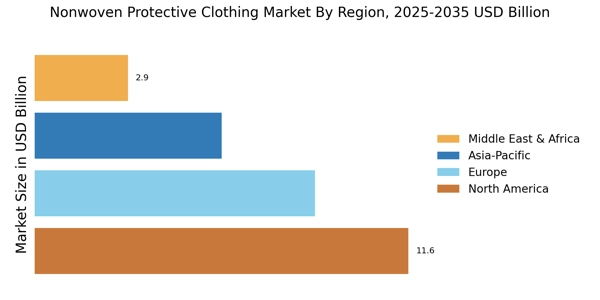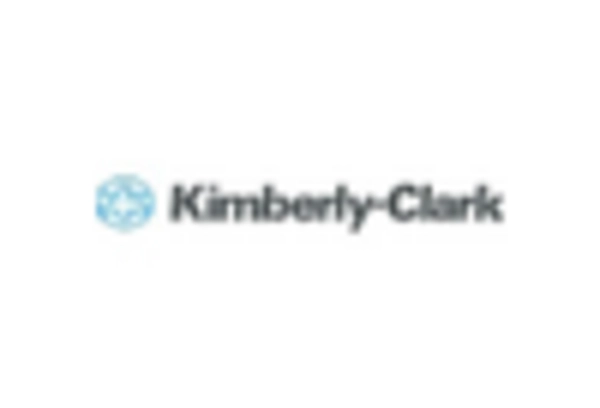Regulatory Compliance and Standards
The Nonwoven Protective Clothing Market is heavily influenced by the establishment of regulatory compliance and safety standards across various sectors. Governments and regulatory bodies are increasingly mandating the use of protective clothing in industries such as healthcare, construction, and manufacturing. This regulatory landscape compels companies to adopt nonwoven protective clothing to meet safety requirements and avoid penalties. In 2025, the market is anticipated to benefit from these regulations, as organizations prioritize compliance and invest in high-quality protective gear. This trend not only enhances worker safety but also drives innovation within the industry, as manufacturers strive to meet evolving standards.
Increased Awareness of Personal Safety
The Nonwoven Protective Clothing Market is significantly influenced by the growing awareness of personal safety among workers and employers alike. As safety regulations become more stringent, organizations are compelled to invest in high-quality protective clothing to mitigate risks associated with workplace hazards. This heightened awareness is reflected in the increasing sales of nonwoven protective garments, which are designed to provide superior protection against chemicals, biological agents, and physical hazards. In 2025, the market is expected to grow as companies recognize the importance of safeguarding their workforce, potentially leading to a market value increase of around 7% compared to previous years.
Rising Demand in Industrial Applications
The Nonwoven Protective Clothing Market experiences a notable surge in demand from various industrial sectors, including manufacturing, construction, and chemical processing. As industries prioritize worker safety and compliance with stringent regulations, the adoption of nonwoven protective clothing becomes increasingly prevalent. In 2025, the market is projected to witness a growth rate of approximately 6.5%, driven by the need for durable and reliable protective gear. Nonwoven materials offer advantages such as lightweight properties and breathability, which enhance comfort for workers in challenging environments. This trend indicates a shift towards more specialized protective clothing solutions tailored to specific industrial needs, thereby expanding the market's potential.
Sustainability and Eco-Friendly Practices
The Nonwoven Protective Clothing Market is witnessing a shift towards sustainability, as consumers and businesses alike become more environmentally conscious. The demand for eco-friendly nonwoven materials, which are often made from recycled or biodegradable sources, is on the rise. This trend is prompting manufacturers to innovate and develop sustainable production processes that minimize environmental impact. In 2025, the market is expected to see a significant increase in the adoption of sustainable practices, as companies aim to align with consumer preferences for environmentally responsible products. This focus on sustainability not only enhances brand reputation but also opens new avenues for market growth.
Technological Innovations in Material Science
Technological advancements in material science are reshaping the Nonwoven Protective Clothing Market. Innovations such as the development of advanced nonwoven fabrics with enhanced barrier properties and improved durability are driving market growth. These materials are engineered to provide superior protection while maintaining comfort and flexibility, which is crucial for users in demanding environments. The integration of smart textiles, which can monitor environmental conditions and provide real-time feedback, is also emerging as a trend. As these technologies evolve, they are likely to attract new segments of consumers, further expanding the market's reach and potential applications.


















Leave a Comment